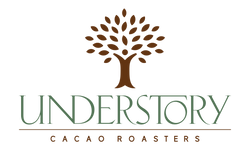
1500 BCE - 400 BCE: THE OLMEC CIVILIZATION AND THE EARLY DAYS OF CACAO
- Initial Cultivation and Consumption: The Olmecs are believed to be the pioneers in cultivating and consuming cacao.
- Beverage Preparation: They would grind cacao beans and mix them with water, creating a frothy, bitter beverage.
600 BCE - 900 AD: THE MAYA CIVILIZATION AND CACAO CULTIVATION
- Cultivation Expansion: The Maya expanded cacao cultivation to the Yucatan Peninsula and Central America.
- Versatile Consumption: The Maya began utilizing cacao in a variety of culinary applications.
- Flavor Innovations: They infused cacao with chili, honey, and vanilla to create diverse flavors.
- Economic and Religious Significance: Cacao beans were used as currency and featured in religious ceremonies.
1000 AD - 1500 AD: THE AZTEC EMPIRE AND THE “DRINK OF THE GODS”
- Cacao Reverence: The Aztecs revered cacao as a divine beverage, mainly reserved for the elite and religious ceremonies.
- Linguistic Contribution: The term "xocolātl" in Nahuatl is believed to be the root of the word "chocolate."
- European Introduction: The Aztecs introduced cacao to Spanish explorers in the 16th century amidst a backdrop of conflict and cultural undermining.
1500s: CACAO REACHES EUROPE AT A COST
-
European Transportation: Spanish explorers, like Hernán Cortés, bring cacao beans back to Europe. While the introduction of cacao to Europe had a lasting cultural impact, it's essential to acknowledge that this exchange was set against a backdrop of colonization, where indigenous populations faced subjugation and many hardships.
-
Initial European Reception: Cacao's initial bitterness led to mixed reactions, but its popularity grew as it was sweetened.
1600s - 1700s: CHOCOLATE HOUSES AND THE POPULARIZATION OF CACAO IN EUROPE
- Emergence of Chocolate Houses: The first chocolate house opened in London in 1657 by a Frenchman, offering an "excellent West India drink" to Londoners, marking the beginning of a hot chocolate craze in the city. Chocolate houses served as social hubs where people could gather, socialize, and exchange ideas. These establishments were often frequented by the elite as chocolate was considered a luxury due to its high cost.
1800s: INNOVATION AND THE BIRTH OF MODERN CHOCOLATE
- Transition to Solid Chocolate: In 1847, Joseph Fry & Sons discovered a method to mix cocoa butter with defatted or "Dutched" cocoa powder and sugar, creating a moldable paste that led to the formation of the solid chocolate bar.
- Conching Innovation: Rodolphe Lindt's invention of the conching process in 1879 in Switzerland revolutionized chocolate production. By continuously mixing and aerating heated liquid chocolate, conching reduces bitterness, enhances flavor, and grinds particles to a finer size for a smoother texture. This process also ensures the even distribution of cocoa butter, contributing to a uniform consistency in the final product.
- Milk Chocolate Creation: Daniel Peter changed the chocolate industry by creating milk chocolate, mixing cocoa with milk powder in 1875. This innovation diversified chocolate offerings and appealed to a broader range of taste preferences.
1900s - PRESENT: MASS PRODUCTION AND CHOCOLATE FOR ALL
-
Industrial Chocolate Production Explodes:The 20th century sees a massive rise in mass production of chocolate, with major brands becoming household names globally. Notable machinery innovations emerged from Germany, inspiring entrepreneurs like Milton Hershey in the USA to venture into chocolate production. The increase in mechanization and the proliferation of factories contributed to 'eating chocolate' becoming a staple snack, transitioning chocolate from a luxury item to an affordable commodity.
-
Artisan Chocolate Revival: There's a renewed interest in artisan and specialty chocolates, with an emphasis on bean-to-bar processes and ethically sourced beans.
TODAY: A BREWED CACAO RENAISSANCE
-
Inspired by the ancient traditions of Mesoamerica, there's a resurgence in brewed cacao as a healthful and caffeine-free alternative to coffee. This old-yet-new beverage is beginning to capture the attention of modern consumers, seeking authentic, healthy and unique experiences.
